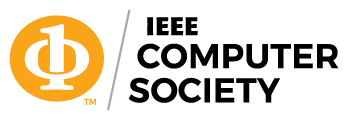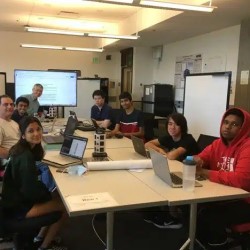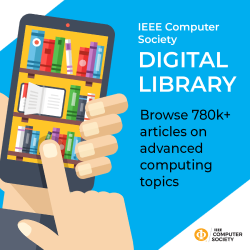Editor-in-Chief Guidelines for IEEE Computer Society Publications
The following guidelines are specifically focused on peer review information as well as issue planning for EICs.
The Editor-in-Chief Role
All IEEE Computer Society editors-in-chief (EICs) must abide by all applicable IEEE policies, including the IEEE Publication Services and Products Board Operations Manual (PSPB Manual) (PDF), and all IEEE Computer Society policies, including the Policies and Procedures Manual and EIC Manual. Additionally, please see the IEEE Editor Portal.
EICs provide high-level management of their publication’s peer review process and are responsible for decisions on all submitted papers. The EIC assigns an editor to handle the peer review process for a submission based on its subject area as well as editor availability. Information related to editorial board roles and the applicable nomination process is provided in the EIC Manual Section 2.A.
The IEEE Computer Society requires that papers be selected for publication on the basis of merit and appropriateness. All technical manuscripts are submitted through our online peer review system, ScholarOne Manuscripts. This ensures that each submission can be tracked properly, will receive a fair and unbiased review, and is handled in an efficient and timely manner. If you are unfamiliar with the system, please view the ScholarOne Editor Basics video tutorial. If you have any problems using the system, please contact the publication’s peer review administrator.
All Computer Society publications offer an Open Access option; please see the information on the Author Resources page. For complete information on IEEE’s Open Access policies, please visit open.ieee.org.
Ethics and Conflicts of Interest
EICs are strongly advised to refrain from submitting articles to their own periodical while serving as EIC, to ensure that no actual or perceived conflicts of interest may arise during the publication process, as detailed in the EIC Manual, Section 4. IEEE policy regarding submissions by EICs to their own publication is found in the PSPB Manual (PDF) Sections 8.2.1.D.9 and 8.2.2.A.2.
If an EIC chooses to submit to his or her own publication, the EIC is required to seek approval in advance of submission from the Magazines Operations Committee (MOC) or Transactions Operations Committee (TOC) chair. The paper must undergo independent handling aimed at ensuring an ethical review process. Specifically, as per PSPB Manual (PDF) Section 8.2.2.A.2, in such cases, we delegate an EIC submission “to another qualified person” such as an associate EIC (AEIC) or associate editor.
EICs play a key role in providing oversight and stewardship of the publication, ensuring policies and procedures are followed, avoiding or mitigating potential conflicts of interest, and ensuring that only the highest-quality technical material is published. To that end, EICs must review and understand the “IEEE Principles of Ethical Publishing” (PSPB Manual (PDF) Introduction Section) and the functions and responsibilities of the EIC role (as described in the PSPB Manual (PDF) Section 2.4).
If an EIC detects, suspects, or is alerted to potential misconduct, they must report it to staff or the IEEE Ethics Reporting Line. Please read PSPB Manual (PDF) Section 8.2.4 for more information.
Authorship
IEEE’s authorship policies can be found in PSPB Manual (PDF) Section 8.2.1.A, and EICs must familiarize themselves with these policies:
“Authorship and co-authorship should be based on a substantial intellectual contribution. It is assumed that all authors have had a significant role in the creation of an article that bears their names. Therefore, the list of authors on an article serves multiple purposes; it indicates who is responsible for the work and to whom questions regarding the work should be addressed.”
Given the importance of the definition of authorship, it is considered rare to make changes to the author list after submission. The decision to allow changes to the author order or author list rests with the EIC and requires approval of all living authors of that article.
Planning Special Issues
The EIC and the publication’s editorial board work to cultivate and assess special issues (SIs) to ensure a healthy pipeline of content and coverage of key topics in the field. Note that individual publications may use terms such as special section, theme issue, or mini-theme, but the process remains the same.
The SI proposal process can vary by publication, but generally broad editorial board involvement and collaboration with guest editors (GEs) is key to a successful SI. Typically, GEs submit their proposal (including a call for papers (CFP), if applicable) to the EIC or an EIC-designated AEIC for assessment, feedback, and approval at least 12 months prior to the cover date. This allows for sufficient time to promote the CFP and conduct a thorough peer review of submissions.
We strongly recommend assigning an editorial board member, such as an AEIC, to shepherd each SI and work closely with the GEs to address questions and ensure the quality, timeliness, and integrity of the peer review process. GEs are entrusted with an important role in content decisions, so EICs should carefully evaluate their qualifications and seek feedback from the editorial board before accepting an SI proposal.
For magazines, when an SI proposal is approved, the EIC fills out the following information in the editorial calendar: topic; cover date; and GE names, affiliations, and email addresses.
If applicable, the EIC emails the finalized CFP to cfp-posting@computer.org with a notice of approval. This triggers the following actions:
- The CFP will be posted to the publication website and the Computer Society CFP portal, and the URL will be provided to the EIC and GEs for dissemination. The Computer Society will also advertise the CFP via newsletters, social media channels, etc.
- A GE group email alias will be created, which will ensure there is a single login account for all GEs to access ScholarOne and a single email address that authors may use to reach the GEs. Once the alias is set up, the GEs will receive an email with login instructions.
- The SI will be opened in ScholarOne and ready for author submissions.
Prescreening Submissions
IEEE’s article prescreening policy is described in PSPB Manual (PDF) Section 8.2.2.A.3. When a submission is received in ScholarOne, the peer review administrator will screen it for compliance with the publication’s requirements (length, reference count, style, and so on) as well as plagiarism before moving it to the EIC’s dashboard. The EIC then evaluates the submission for any of the following deficiencies before assigning it for further review:
- Does not follow the IEEE guidelines for style
- Obviously violates IEEE policies
- Is incomprehensible (in other words, so poorly written that it is unreadable)
- Does not fall within the scope of the publication or SI
- Does not meet the minimum criterion for technical substance established for the periodical
If a submission has any of these deficiencies, it may require an Administrative Reject or Editorial Reject decision (see the Responsibility for Content Decisions section below).
Please read the following sections:
Plagiarism
All submissions to Computer Society publications are screened for plagiarism and overlap with other published articles. When a paper’s overlap with other published material exceeds the appropriate threshold, the EIC will receive notification and must then assess the overlap and determine whether the submission merits further consideration or is in violation of IEEE plagiarism policies. PSPB Manual (PDF) Section 8.2.4 describes the guidelines for adjudicating misconduct such as plagiarism when it is discovered.
Managing Peer Review
If a paper is determined to be appropriate for the publication and not in violation of any of the policies noted above, the EIC assigns the paper to an editor or GE who will then assign peer reviewers and oversee the peer review process through recommendation (and revision, if need be). For more information about these roles, please see the Editor Resources page and the Guest Editor Resources page.
Peer Review Schedules
For an overview of the timeline for submission, review, revision, and production, please see our peer review schedule guide here.
Responsibility for Content Decisions
As described in PSPB Manual (PDF) Section 2.4.2.I, the EIC:
“Examines the comments of the referees and exercises his or her best judgment, in the light of the referees’ recommendations, on whether or not to publish. While this decision may be delegated to another editor of the publication, the Editor-in-Chief is ultimately accountable for the final decision.”
Thus, accountability for all content decisions – once the required evaluation, review, and recommendation steps are complete – rests with the EIC.
Please read the guide for making peer review decisions here.
Author Appeals
If an author appeals a decision made by the EIC, the appeal should follow the Society’s process, which is in compliance with PSPB Manual (PDF) Section 8.2.3. If the author appeal is sent directly to the EIC, the first action is to notify the staff Content Quality Assurance Manager, who will help facilitate the process. The EIC, taking into account the reviews, the recommendation by the AE, and the authors’ appeal, should respond to the appeal with their assessment and an explanation of why they are maintaining the decision or allowing the paper to undergo further consideration.
In the rare case that an author is unsatisfied with the outcome of their appeal, the issue may be escalated to the MOC or TOC chair for further consideration. If an author is still unsatisfied and additional escalation is needed, the IEEE-CS VP for Publications will review the case. Ultimately, the final level of appeal follows the policy as written in PSPB Manual (PDF) Section 8.2.3:
“In the event of a challenge to review or publishing actions which cannot be resolved at the sponsoring-Organizational Unit level, the Vice President – Publication Services and Products shall be the IEEE Officer with cognizance of the appeals process.”
Using the Production Portal
EICs are encouraged to use the IEEE Publishing Operations Production Portal (POPP) to keep track of articles that have been accepted and are in production. Because it includes reports on overall citation and timeliness statistics, as well as other analytics and usage information, POPP is an extremely versatile and useful resource.
Writing an Editorial
At the EIC’s discretion, editorials appear either at regular or ad hoc intervals, and may give a brief overview of the current issue, discuss the state of the publication, or briefly introduce new editorial board members or related activities. These may be written by the EIC or, at her/his request, by an editorial board member or person in the field.
Editorials should be no more than three pages in length (~2500 words), not inclusive of new editor biographies and photographs. Typically, editorials have minimal references (no more than four), are of interest to the periodical’s readership in general, and include the writer’s complete and current affiliation and contact information. For editorials that are overlong, heavily self-referenced, or otherwise deviate from the norm, the MOC or TOC chair may be consulted to review for appropriateness.
Editorials are subject to editing for length, clarity, and style, and for this reason, they must be submitted in an editable format.






